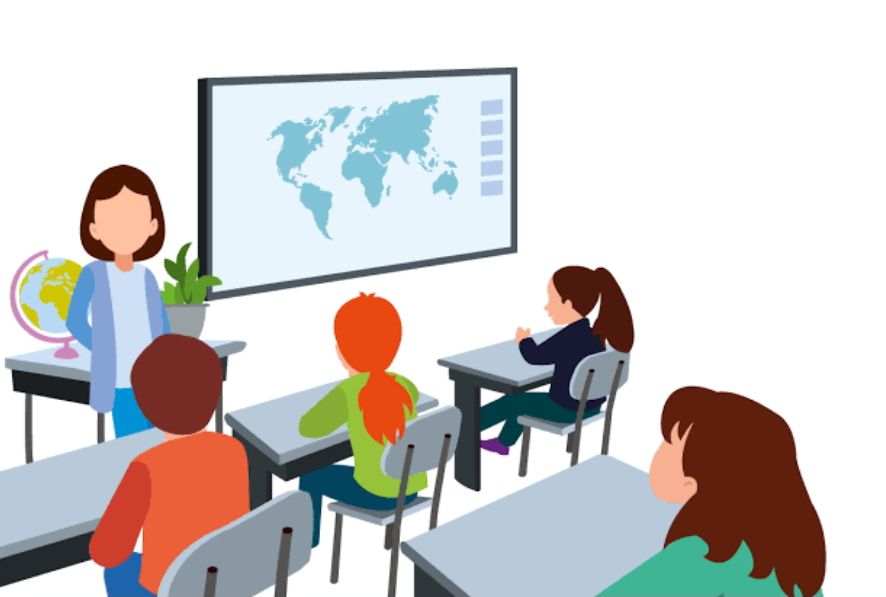
Welcome, fellow educators and lifelong learners, to another engaging exploration of feedback! Providing constructive feedback is an art form, a skill that empowers others to learn and flourish. Let’s delve into your questions and discover strategies that transform feedback sessions into springboards for growth.
Question: How can I sugarcoat criticism? My students need improvement, but I don’t want to hurt their feelings.
Answer: Instead of sugary platitudes, focus on specific behaviors and positive reframing. Ditch the “Your essay was poorly written” and opt for, “I noticed some areas where you could strengthen your sentence structure. Have you considered using transition words to create a smoother flow of ideas?” Offer suggestions and resources, demonstrating your confidence in their ability to improve. Positive reframing involves highlighting what you want to see more of. Instead of saying, “You rarely participate in class discussions,” try, “I’d love to hear your thoughts more often in class. Do you feel comfortable sharing your ideas in small groups first?”
Question: My feedback feels vague! How can I be more specific?
Answer: Enter the SBI Model (Situation, Behavior, Impact)! Imagine yourself as a feedback detective. Describe the situation (“During your class presentation”), pinpoint the specific behavior you observed (“when explaining the concept of photosynthesis”), and explain the impact (“some students seemed confused”). For instance, “During your presentation on photosynthesis, when you mentioned the role of sunlight, some students seemed unsure. Perhaps including a visual representation of the process could enhance clarity for everyone.”
Question: How can I get students to take charge of their learning during feedback sessions?
Answer: Open-ended questions are your secret weapon! Instead of dictating solutions, try, “What do you think might help you improve your understanding of this topic?” or “Can you identify any areas where you’d like to focus your efforts next time?” This empowers students to become active participants in their learning journey, fostering a sense of ownership. Imagine the shift from a passive “fix my mistakes” mentality to a proactive “how can I learn from this?” approach.
Question: Is it okay to praise effort, even if the outcome wasn’t perfect?
Answer: Absolutely! Effort recognition is the fertilizer that nourishes a growth mindset. Acknowledge their hard work and highlight areas where they demonstrated improvement strategies. For instance, “I noticed you incorporated feedback from the previous assignment on using commas effectively. Great job!” This positive reinforcement motivates students to persevere and embrace challenges.
Question: How can I deliver critical feedback without making students feel discouraged?
Answer: Separate the work from the person. Focus on the task at hand and use respectful, objective language. Instead of saying, “You always struggle with math problems,” try, “Let’s revisit the steps involved in solving this type of problem. Would you like to try a different approach, perhaps using a graphic organizer to visualize the steps?” This keeps the focus on the learning objective and provides opportunities for improvement in a supportive environment.
Question: Written feedback can feel impersonal. How can I make it more engaging?
Answer: Banish the red pen! Utilize clear and concise language that highlights strengths alongside areas for improvement. Embed comments or annotations to pinpoint specific sections within the work that require attention. Consider using online grading platforms with rubrics to provide structured feedback with clear expectations.
Question: Different students learn differently. How can I cater my feedback to their styles?
Answer: Variety is the spice of feedback! For our auditory learners, consider using audio recordings or video conferencing for feedback sessions. Visual learners might benefit from graphic organizers, mind maps, or color-coded annotations to illustrate areas for improvement. Kinesthetic learners might appreciate role-playing or simulations to practice new skills. Imagine a student struggling with fractions. While a written explanation might be helpful, consider creating a hands-on activity using manipulatives or even edible fractions (think cookies!) to solidify understanding.
Question: Public speaking isn’t my forte. Are there alternatives to in-class feedback?
Answer: Absolutely! Individualized feedback sessions can be highly effective. Schedule one-on-one meetings or small group conferences to provide personalized feedback in a private setting. This allows for a more focused discussion and fosters a safe space for students to ask questions without fear of judgment. Imagine the transformation when a student who hesitates to participate in class discussions thrives in a one-on-one feedback session, asking insightful questions and actively seeking clarification.
Question: How can I get students to see feedback as a learning tool, not just a grade?
Answer: Shift the conversation! Frame feedback as a collaborative journey towards achieving learning goals. Discuss the specific objectives and how the feedback can help students reach them. Encourage them to ask questions and seek clarification. Imagine a student receiving feedback on their persuasive essay. Instead of focusing solely on the grade, discuss the effectiveness of their arguments, the use of evidence, and brainstorm strategies to strengthen their persuasive techniques.
Question: Is self-assessment a valuable feedback tool?
Answer: Self-assessment is a game-changer! It empowers students to take ownership of their learning journey. Incorporate self-assessment checklists or reflection prompts that encourage students to identify their strengths, weaknesses, and areas for improvement. Imagine a student completing a self-assessment after a science experiment. The checklist might prompt them to reflect on their data collection methods, analyze their results, and identify areas where they could have improved their observations. This self-awareness fosters a growth mindset and helps students become more independent learners.
By incorporating these effective feedback strategies, you create a dynamic learning environment where constructive criticism is embraced as a catalyst for growth. Feedback becomes a conversation, not a judgment, empowering students to reach their full potential. So, the next time you provide feedback, remember, it’s not about pointing out flaws, but about illuminating the path to mastery!










